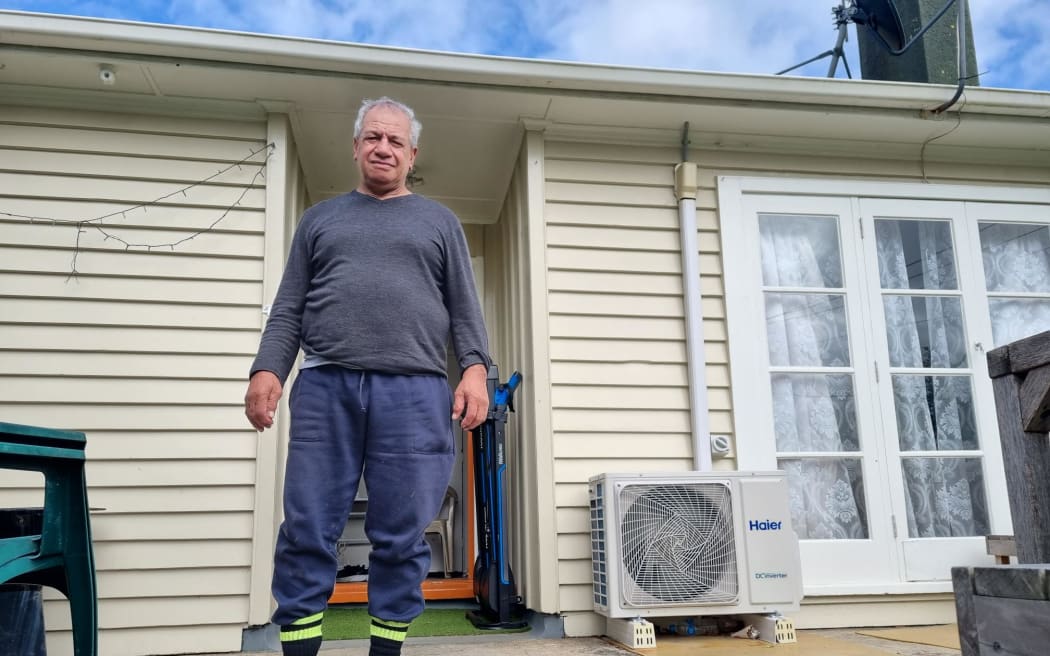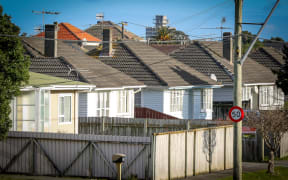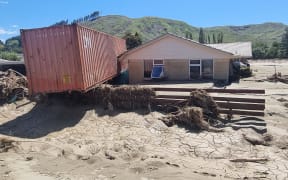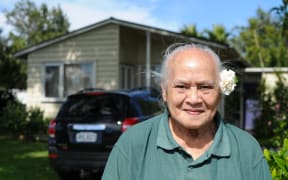
Elizabeth Gedye has lived next to Oakley Creek for 41 years Photo: RNZ / Amy Williams
Once a swamp, always a swamp - that is what one Kāinga Ora tenant says about the home she's lived in for decades, built next to a creek in Auckland.
The house is among more than 4000 in the state housing provider's Auckland portfolio that were built on flood prone land.
Oakley Creek winds through the Auckland suburb Mt Roskill, where many state houses straddle the waterway.
Kāinga Ora tenant Elizabeth Gedye has lived next to the creek for 41 years and said her back yard regularly flooded.
She did not think new housing should be built nearby, but will be.
"It is the most silliest thing that I have ever seen or heard. Where I am in the Wesley block, this has been here since the early 50s. It was swamp land then and it's swamp land now."
Floodwater lapped at her front doorstep during the Auckland Anniversary flooding in January, and was waist deep on her driveway.
"It is always going to be swamp land and it should be treated as that. It's not a place to put houses on. I certainly wouldn't come back here if they decided to pull this down and put properties on it."
Gedye said her constant battle was mold.
"It's always there. You cannot get rid of the mold no matter how hard you try."
Kāinga Ora continues to build homes on land it knows was at risk of flooding, or soon will be, and housing advocates say that was not good enough.
Research, presented to Kāinga Ora by NIWA in February 2020, showed more than 15 percent of the state housing portfolio was on flood prone land.
Of Kāinga Ora's planned investments, 16 percent were in rainfall or river flood prone areas and 1.7 percent were in coastal flooding zones at risk of sea level rise.
The agency said most of those decisions were made before it requested a report from NIWA, detailing risks of climate change to its properties.
Tennants Protection Association Auckland coordinator Angela Maynard said people living in state housing had the right to warm, dry homes.
"We like to think that people in state houses have secure, virtually permanent housing. If this is not so because of dampness and mold and the building of houses on wetlands or on creeks, or where there is likely to be flooding, then it's a huge concern."
Dozens of Kāinga Ora houses were flooded during the Auckland Anniversary weekend flooding, many of which will have to be rebuilt or destroyed.
While Kāinga Ora has increased its focus on flood mitigation, Māngere Housing Community Reference Group member Jo Latif said it had taken too long to consider the impact of climate change.
Housing near a creek and wetland in the suburb flooded badly during anniversary weekend, Latif said.
"I was at a community meeting just a few weeks ago and a Kāinga Ora representative stated that 19 houses just on one street had to be demolished due to flood damage and that's not good enough," she said.
"Our housing group definitely advocates for housing, we love new housing for our community but these houses are not built fit for purpose. We need to ensure that in the future, with flooding, that this won't happen again."

Steven Schaunkel has lived near Oakley Creek for seven years. Photo: RNZ / Amy Williams
Another Mt Roskill resident, Steven Schaunkel, has lived in a state house near Oakley Creek for seven years.
His house flooded to knee-deep during anniversary weekend.
"When I started walking across the road, it was like a river. It was strong and fast."
He said he will stay put but would like to see new houses in the area built higher off the ground and apartment ground levels for carparks only.






